Uprisings
18 Oct 2016 - 15 Jan 2017

Maria KOURKOUTA
Remontages
2016
16 mm sur vidéo (en boucle), noir et blanc, silencieux, 4’ 10.
© Maria Kourkouta. Production : Jeu de Paume, Paris
Remontages
2016
16 mm sur vidéo (en boucle), noir et blanc, silencieux, 4’ 10.
© Maria Kourkouta. Production : Jeu de Paume, Paris
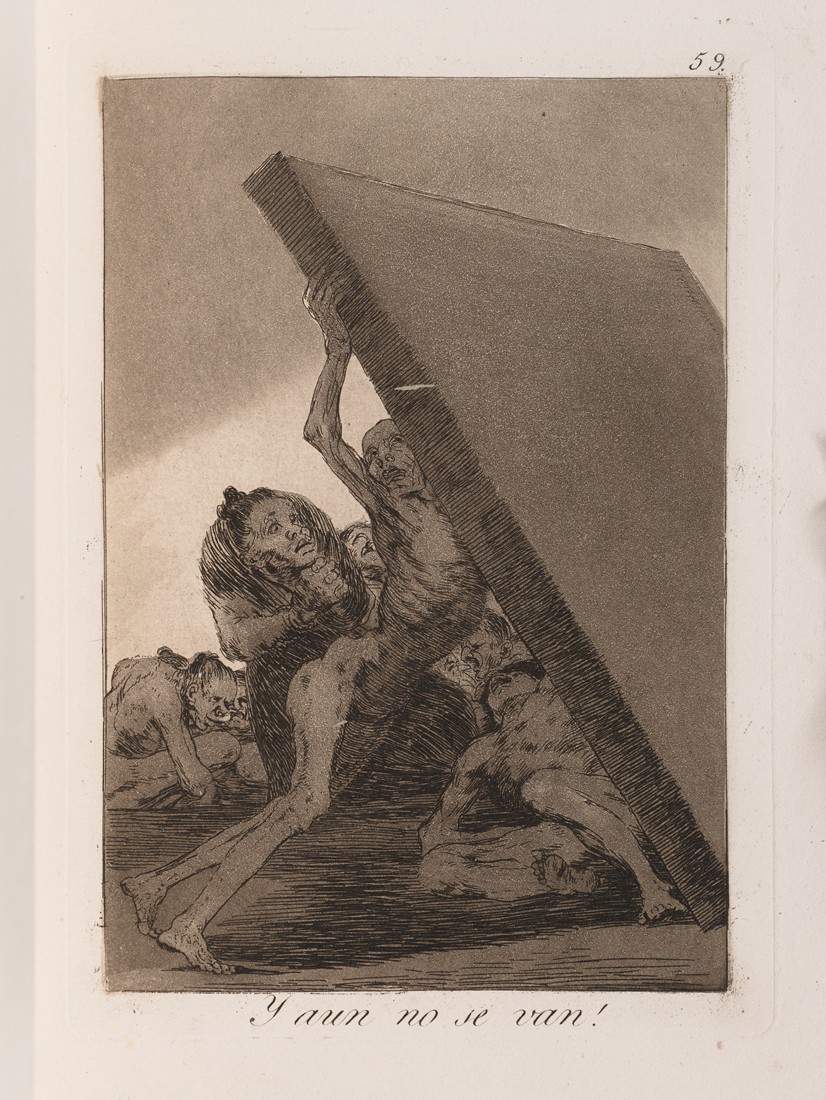
Francisco de GOYA
Los Caprichos
1799
Eau-forte, aquatinte et burin, 2e édition de 1855.
Collection Sylvie et Georges Helft. Photo: Jean de Calan
Los Caprichos
1799
Eau-forte, aquatinte et burin, 2e édition de 1855.
Collection Sylvie et Georges Helft. Photo: Jean de Calan
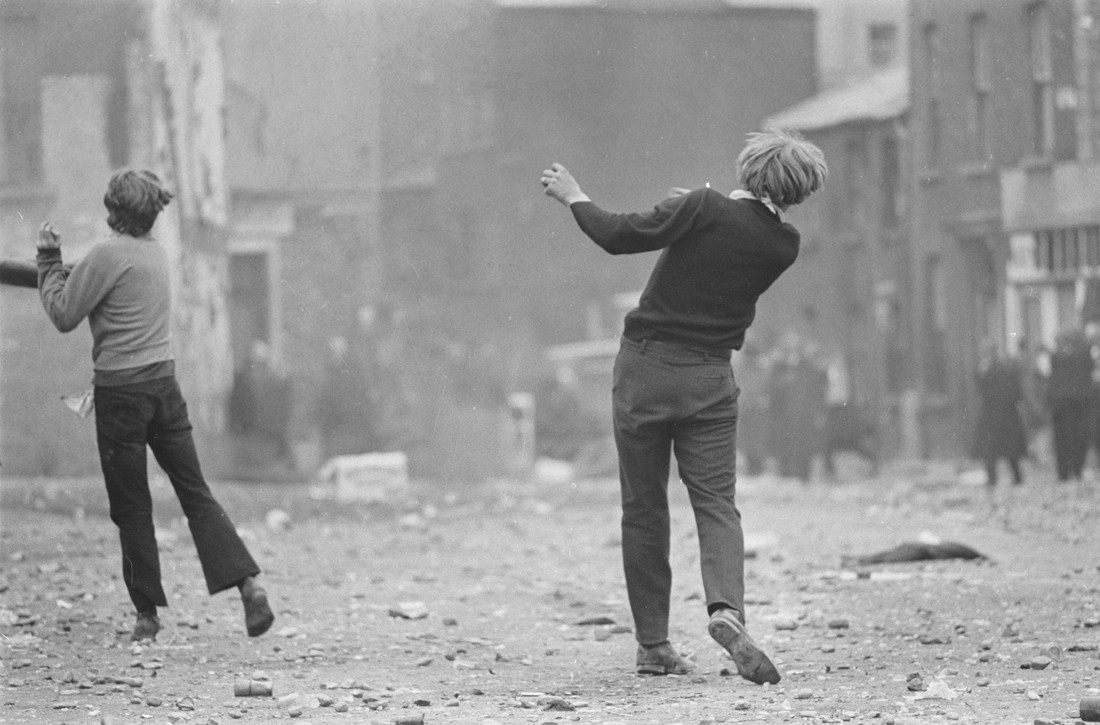
Gilles CARON
Manifestations anticatholiques à Londonderry
1969
© Gilles Caron / Fondation Gilles Caron / Gamma Rapho
Manifestations anticatholiques à Londonderry
1969
© Gilles Caron / Fondation Gilles Caron / Gamma Rapho
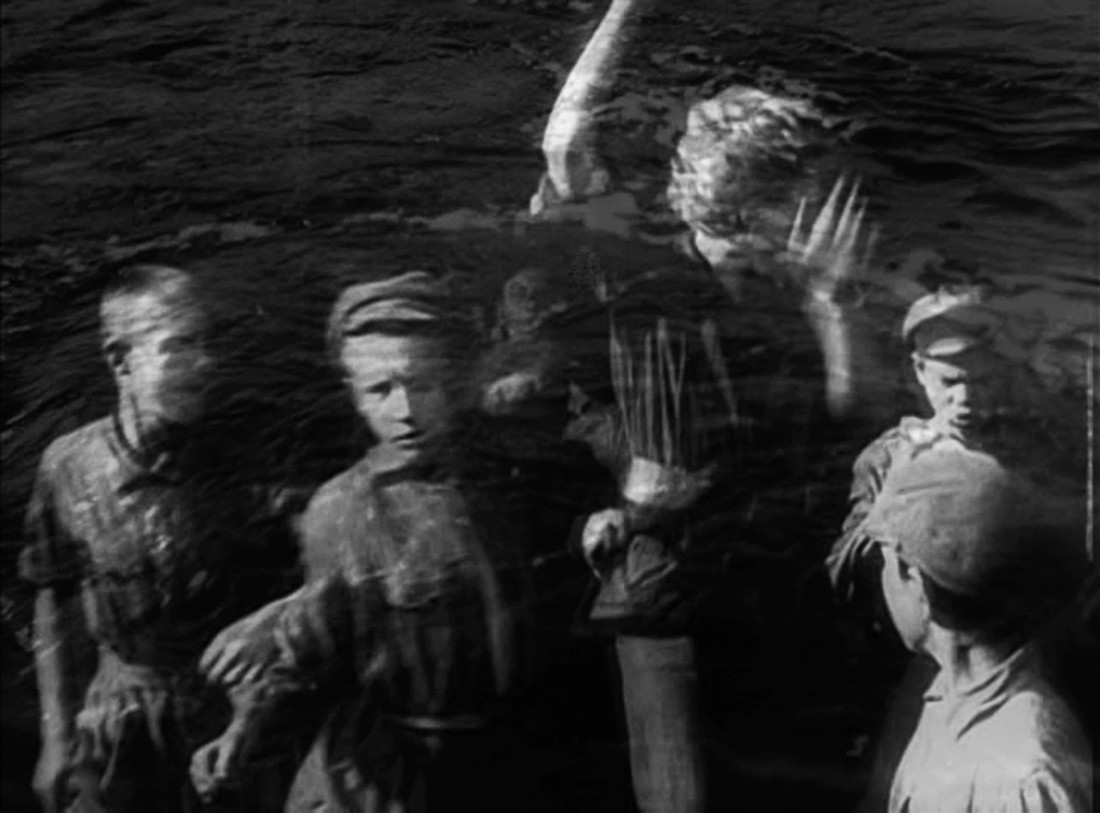
Maria KOURKOUTA
Remontages
2016
16 mm sur vidéo (en boucle), noir et blanc, silencieux, 4’ 10.
© Maria Kourkouta. Production : Jeu de Paume, Paris
Remontages
2016
16 mm sur vidéo (en boucle), noir et blanc, silencieux, 4’ 10.
© Maria Kourkouta. Production : Jeu de Paume, Paris

Henri MICHAUX
Sans titre
1975
Acrylique sur papier.
Collection particulière. © ADAGP, Paris, 2016. Photo : Jean-Louis Losi
Sans titre
1975
Acrylique sur papier.
Collection particulière. © ADAGP, Paris, 2016. Photo : Jean-Louis Losi
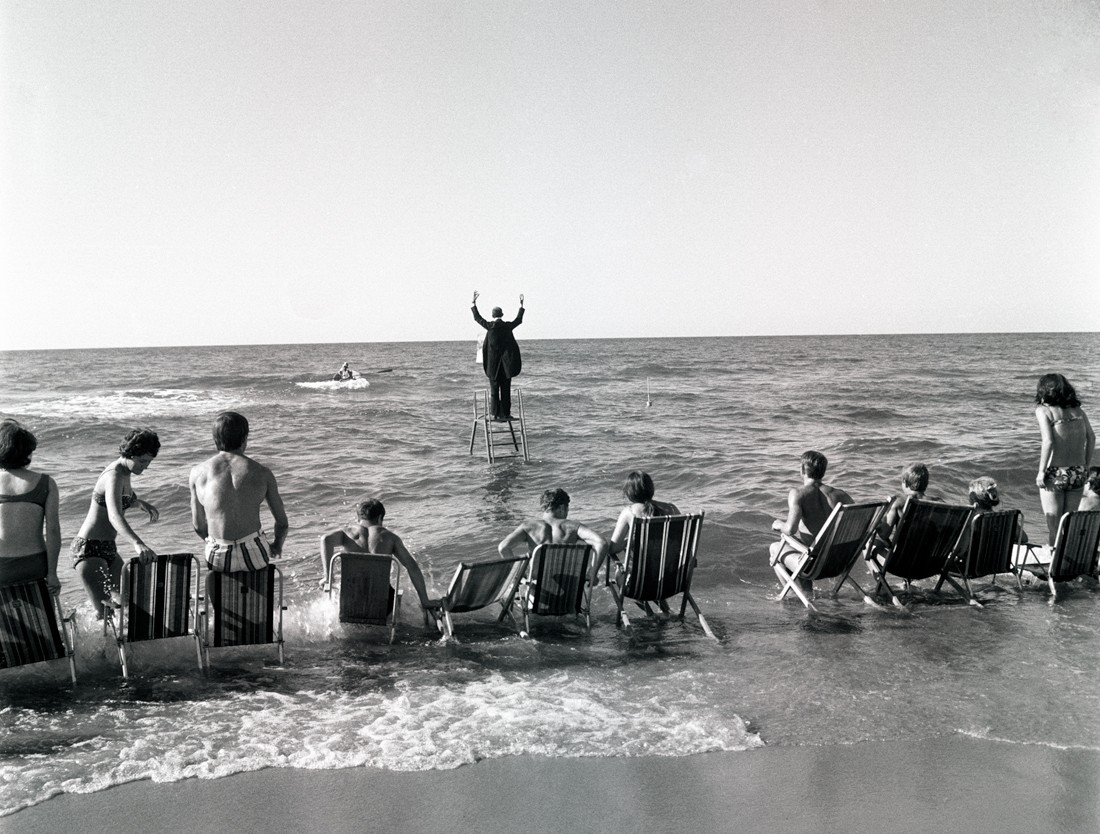
Tadeusz KANTOR
Le « Panoramic Sea Happening – Sea Concerto, Osieki » (extrait d’une série)
1967
Eustachy KOSSAKOWSKI
Tirage jet d'encre pigmentaire.
Propiétaire des négatifs et diaositifs : Musée d’Art Moderne de Varsovie. © Collection Anka Ptaszkowska
Le « Panoramic Sea Happening – Sea Concerto, Osieki » (extrait d’une série)
1967
Eustachy KOSSAKOWSKI
Tirage jet d'encre pigmentaire.
Propiétaire des négatifs et diaositifs : Musée d’Art Moderne de Varsovie. © Collection Anka Ptaszkowska
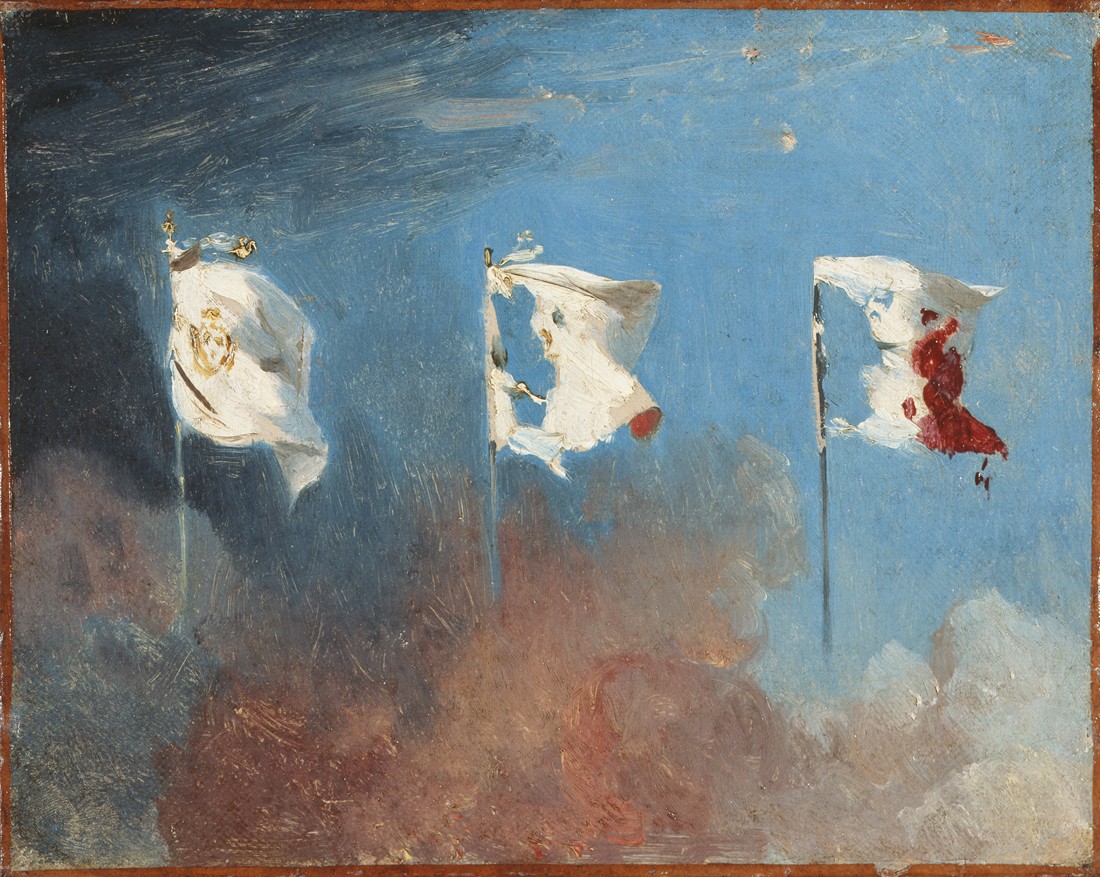
Léon COGNIET
Les Drapeaux
1830
Huile sur toile. Musée des Beaux-Arts, Orléans. Photo : François Lauginie
Les Drapeaux
1830
Huile sur toile. Musée des Beaux-Arts, Orléans. Photo : François Lauginie
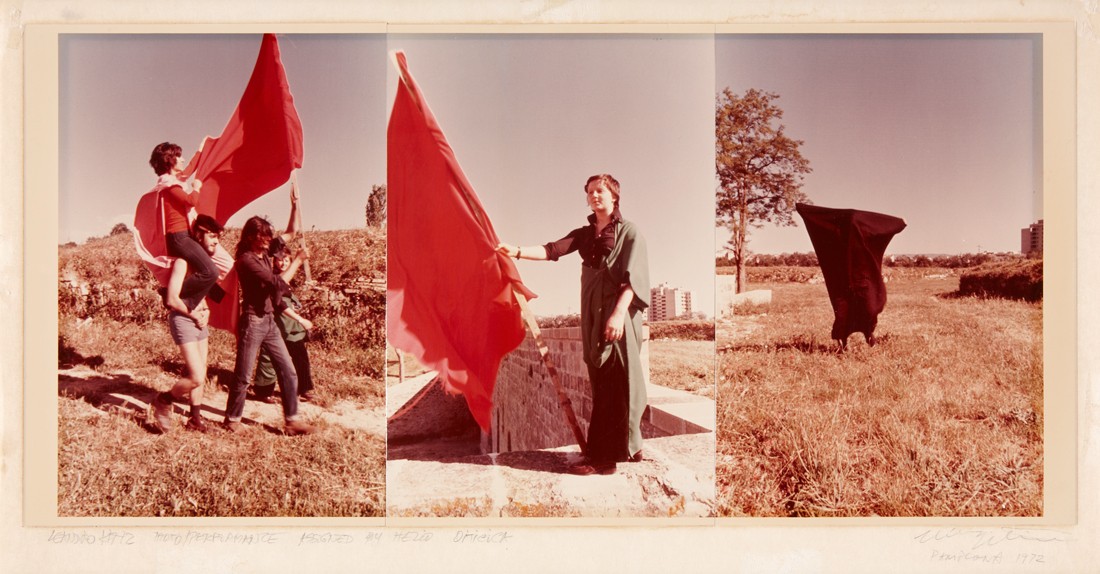
Hélio OITICICA et Leandro KATZ
Parangolé – Encuentros de Pamplona
1972
Impression chromogène (sur papier et carton).
Museo Nacional Centro de Arte Reina Sofía, Madrid. Photo : Archives Museo Nacional Centro de Arte Reina Sofía / © Projeto Hélio Oiticica / © Leandro Katz
Parangolé – Encuentros de Pamplona
1972
Impression chromogène (sur papier et carton).
Museo Nacional Centro de Arte Reina Sofía, Madrid. Photo : Archives Museo Nacional Centro de Arte Reina Sofía / © Projeto Hélio Oiticica / © Leandro Katz
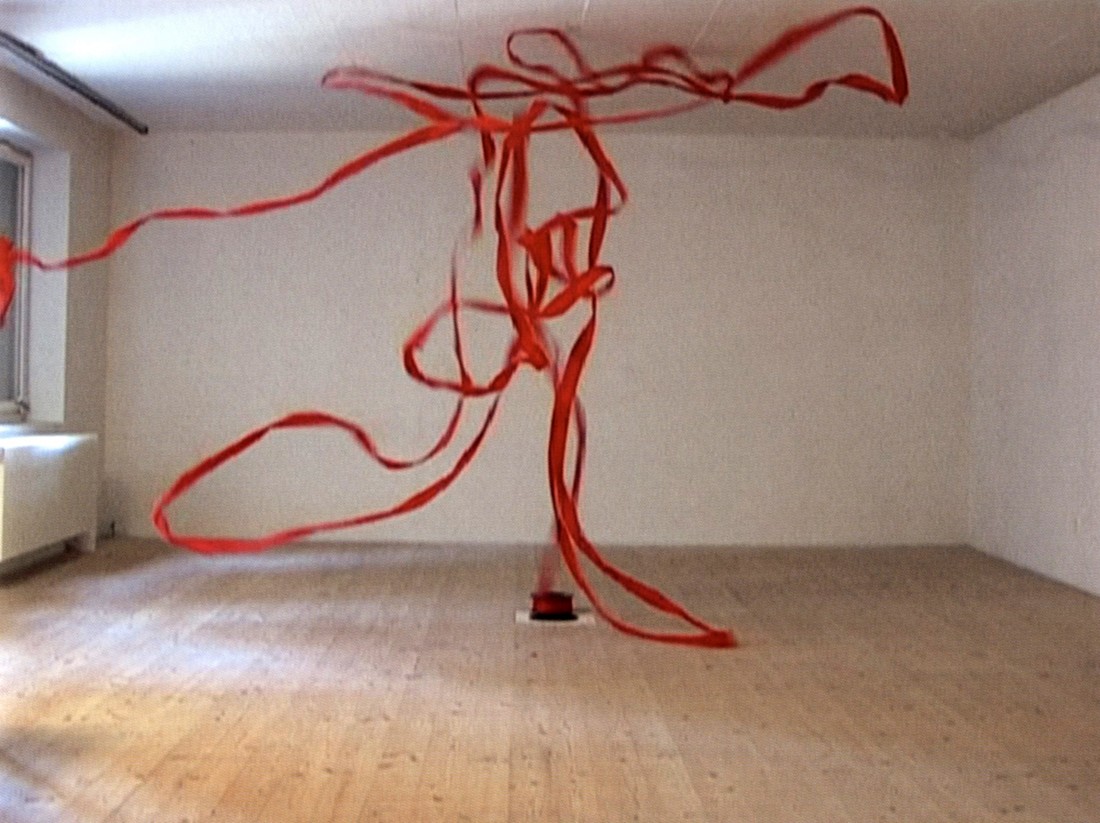
Roman SIGNER
Rotes Band / Red Tape
2005
Vidéo couleur, son, 2’07’’.
Caméra : Aleksandra Signer / Courtesy de l’artiste et d’Art : Concept, Paris
Rotes Band / Red Tape
2005
Vidéo couleur, son, 2’07’’.
Caméra : Aleksandra Signer / Courtesy de l’artiste et d’Art : Concept, Paris
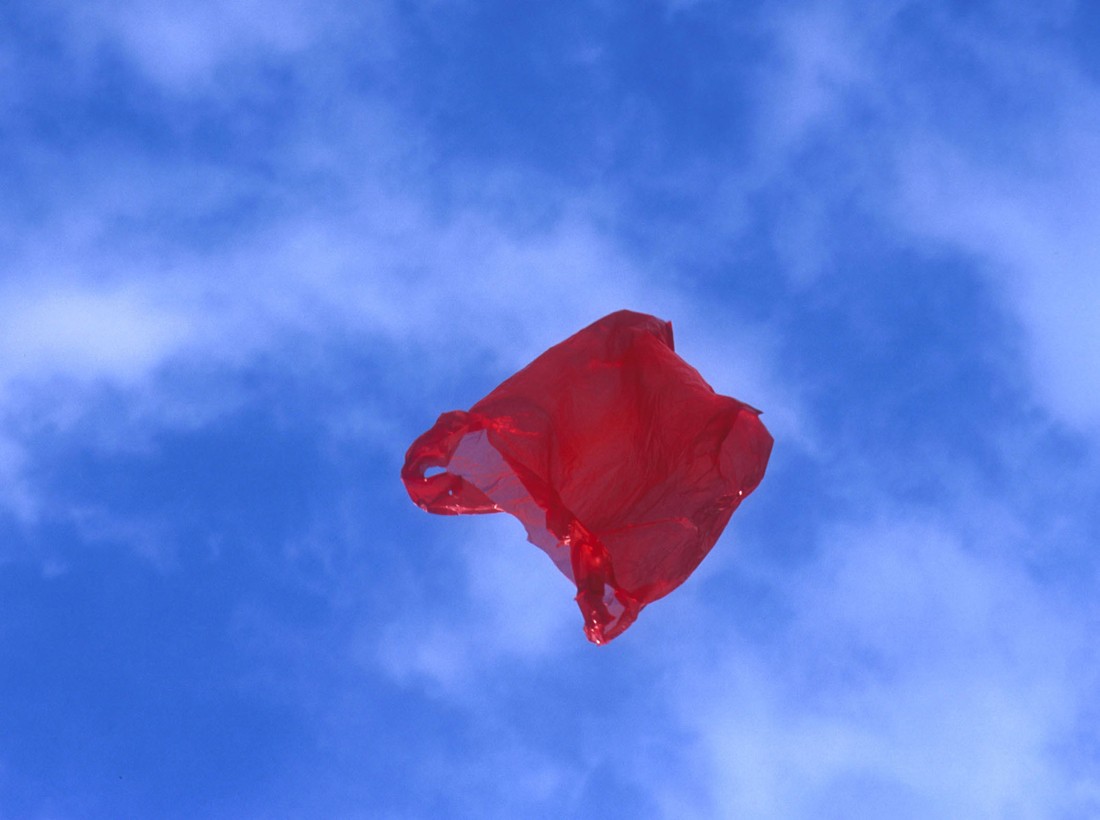
Dennis ADAMS
Patriot
série « Airborne », 2002
C-Print contrecollé sur aluminium.
Prêt du Centre national des Arts Plastiques, Paris, inv. FNAC 03.241.
© Dennis Adams / CNAP / Courtesy Galerie Gabrielle Maubrie
Patriot
série « Airborne », 2002
C-Print contrecollé sur aluminium.
Prêt du Centre national des Arts Plastiques, Paris, inv. FNAC 03.241.
© Dennis Adams / CNAP / Courtesy Galerie Gabrielle Maubrie
UPRISINGS
18 October 2016 - 15 Jan 2017
Curator: Georges Didi-Huberman
Uprisings is a trans-disciplinary exhibition on the theme of human gestures that raise up the world or rise up against it: collective or individual gestures, actions or passions, works or thoughts.
They are gestures which say no to a state of history that is considered too “heavy” and that therefore needs to be “lifted” or even sent packing. They are also gestures that say yes to something else: to a desired better world, an imagined or adumbrated world, a world that could be inhabited and conceived differently.
These figures of uprising and up-raising will range freely across mediums: paintings, drawings, prints, video installations, photographs, fiction films, documentary images, writers’ manuscripts, tracts, posters, etc., without hierarchies. The exhibition sequence will follow a sensitive, intuitive path along which the gaze can focus on exemplary “cases” treated with a precision that prevents any kind of generalisation. We will be mindful not to conclude, not to dogmatically foreclose anything. The sequence will comprise five main parts: elements, gestures, words, conflicts, desires.
ELEMENTS (UNLEASHED)
The elements become unleashed, time falls out of joint. — And if the imagination made mountains rise up?
To rise up, as when we say “a storm is rising.” To reverse the weight that nailed us to the ground. So it is the laws of the atmosphere itself that will be contradicted. Surfaces—sheets, draperies, flags—fly in the wind. Lights that explode into fireworks. Dust that rises up from nooks and crannies. Time that falls out of joint. The world upside down. From Victor Hugo to Eisenstein and beyond, uprisings are often compared to hurricanes or to great, surging waves. Because then the elements (of history) become unleashed.
We rise up first of all by exercising our imagination, albeit through our “caprichos” (whims or fantasies) or “disparates” (follies) as Goya said. The imagination makes mountains rise up. And when we rise up from a real “disaster,” it means that we meet what oppresses us, and those who seek to make it impossible for us to move, with the resistance of forces that are desires and imaginations first of all, that is to say psychical forces of unleashing and of reopening possibilities.
Dennis Adams, Francis Alÿs, Léon Cogniet, Marcel Duchamp, Francisco de Goya, William Hogarth, Victor Hugo, Leandro Katz, Eustachy Kossakowski, Man Ray, Jasmina Metwaly, Henri Michaux, Tina Modotti, Robert Morris, Saburô Murakami, Hélio Oiticica, Roman Signer, Tsubasa Kato, Jean Veber, French anonymous.
GESTURES (INTENSE)
From burden to uprising. — With hammer blows. — Arms rise up. — The pasión. — When bodies say no. — Mouths for exclaiming.
Rising up is a gesture. Before even attempting to carry out a voluntary and shared “action,” we rise up with a simple gesture that suddenly overturns the burden that submission had, until then, placed on us (be it through cowardice, cynicism, or despair). To rise up means to throw off the burden weighing down on our shoulders, keeping us from moving. It is to break a certain present— be it with hammer blows as Friedrich Nietzsche and Antonin Artaud sought to do—and to raise your arms towards the future that is opening up. It is a sign of hope and of resistance.
It is a gesture and it is an emotion. The Spanish Republicans—whose visual culture was shaped by Goya and Picasso, but also by all the photographers on the field who collected, the gestures of freed prisoners, of voluntary combatants, of children and of the famous La Pasionaria, Dolores Ibárruri—fully assumed this. In the gesture of rising up, each body protests with all of its limbs, each mouth opens and exclaims its no-refusal and its yes-desire.
Paulo Abreu, Art & Language, Antonin Artaud, Taysir Batniji, Joseph Beuys, Désiré-Magloire Bourneville, Gilles Caron, Claude Cattelain, Agustí Centelles, Chim, Pascal Convert, Gustave Courbet, Élie Faure, Michel Foucault, Leonard Freed, Gisèle Freund, Marcel Gautherot, Agnès Geoffray, Jochen Gerz, Jack Goldstein, Käthe Kollwitz, Alberto Korda, Germaine Krull, Hiroji Kubota, Annette Messager, Lisette Model, Tina Modotti, Friedric Nietzsche, Willy Römer, Willy Ronis, Graciela Sacco, Lorna Simpson, Wolf Vostell, anonymes catalans, français, italiens.
WORDS (EXCLAIMED)
Poetic insurrections. — The message of the butterflies. — Newspapers. — Making a book of resistance. — The walls speak up.
Arms have been raised, mouths have exclaimed. Now, what are needed are words, sentences to say, sing, think, discuss, print, transmit. That is why poets place themselves “at the forefront” of the action itself, as Rimbaud said at the time of the Paris Commune. Upstream the Romantics, downstream the Dadaists, Surrealists, Lettrists, Situationists, etc., all undertook poetic insurrections.
“Poetic” does not mean “far from history,” quite the contrary. There is a poetry of tracts, from the protest leaflet written by Georg Büchner in 1834 to the digital resistance of today, through René Char in 1943 and the “cine-tracts,” from 1968. There is a poetry particular to the use of newspapers and social networks. There is a particular intelligence—attentive to the form—inherent in the books of resistance or of uprising. Until the walls themselves begin to speak and occupy the public space, the sensible space in its entirety.
Antonin Artaud, Ever Astudillo, Ismaïl Bahri, Artur Barrio, Georges Bataille, Charles Baudelaire, Joseph Beuys, Enrique Bostelmann, André Breton, Marcel Broodthaers, Cornelius Castoriadis, Champfleury, Dada, Armand Dayot, Guy Debord, Carl Einstein, Jean-Luc Fromanger, Federico García Lorca, Jean-Luc Godard, Groupe Dziga Vertov, Raymond Hains, Raoul Hausmann, John Heartfield, Bernard Heidsieck, Victor Hugo, Asger Jorn, Jérôme Lindon, Rosa Luxemburg, Man Ray, Germán Marín, Chris Marker, Cildo Meireles, Henri Michaux, Tina Modotti, Pier Paolo Pasolini, Pablo Picasso, Sigmar Polke, Jacques Rancière, Alain Resnais, Armando Salgado, Álvaro Sarmiento, Philippe Soupault, Félix Vallotton, Gil Joseph Wolman, German, Chilean, Cuban, Spanish, French, Italian, Mexican, Russian unknowns.
CONFLICTS (FLARED UP)
To go on strike is not to do nothing. — Demonstrating, showing oneself. — Vandal joys. — Building barricades. — Dying from injustice.
And so everything flares up. Some see only pure chaos. Others witness the sudden appearance of the forms of a desire to be free. During strikes, ways of living together are invented. To say that we “demonstrate,” is to affirm—albeit to be surprised by it or even not to understand it—that something appeared that was decisive. But this demanded a conflict. Conflict: an important motif of modern historical painting (from Manet to Polke), and of the visual arts in general (photography, cinema, video, digital arts).
It happens sometimes that uprisings produce merely the image of broken images: vandalism, those kinds of celebrations in negative format. But on these ruins will be built the temporary architecture of uprisings: paradoxical, moving, makeshift things that are barricades. Then, the police suppress the demonstration, when those who rise up had only the potency of their desire (potency: not power). And this is why there are so many people in history who have died from having risen up.
Manuel Álvarez Bravo, Hugo Aveta, Ruth Berlau, Malcolm Browne, Henri Cartier-Bresson, Agustí Centelles, Chen Chieh-Jen, Armand Dayot, Honoré Daumier, Adolphe-Eugène Disdéri, Robert Filliou, Jules Girardet, Arpad Hazafi, John Heartfield, Dmitri Kessel, Herbert Kirchhorff, Héctor López, Édouard Manet, Ernesto Molina, Jean-Luc Moulène, Voula Papaioannou, Sigmar Polke, Willy Römer, Pedro G. Romero, Jésus Ruiz Durand, Armando Salgado, Allan Sekula, Thibault, Félix Vallotton, Jean Veber, German, Catalan, French, Mexican, South African unknowns.
DESIRES (INDESTRUCTIBLES)
The hope of one condemned to death. — Mothers rise up. — They are your own children. — They who go through walls.
But potency outlives power. Freud said that desire was indestructible. Even those who knew they were condemned—in the camps, in the prisons—seek every means to transmit a testimony or call out. As Joan Miró evoked in a series of works titled “The Hope of a Condemned Man“, in homage to the student anarchist Salvador Puig i Antich, executed by Franco’s regime in 1974.
An uprising can end with mothers’ tears over the bodies of their dead children. But these tears are merely a burden: they can still provide the potencies of uprising, like in the “resistance marches” of mothers and grandmothers in Buenos Aires. It is our own children who rise up: “Zero for Conduct!“ was Antigone not almost a child herself? Whether in the Chiapas forests or on the Greece—Macedonia border, somewhere in China, in Egypt, in Gaza, or in the jungle of computerized networks considered as a vox populi, there will always be children to jump the wall.
Francisca Benitez, Ruth Berlau, Bruno Boudjelal, Agustí Centelles, Eduardo Gil, Mat Jacob, Ken Hamblin, Maria Kourkouta, Joan Miró, Pedro Motta, Voula Papaioannou, Estefania Peñafiel Loaiza, Enrique Ramirez, Argentinian, Greek, Mexican unknowns.
Curator: Georges Didi-Huberman
Exhibition produced by Jeu de Paume, Paris
Isabel Marant is supporting the exhibition “Uprisings“.
Les Amis du Jeu de Paume bring their support to the exhibition and to the catalogue Uprisings.
Partners: A NOUS PARIS, de l’air, l’Architecture d’Aujourd’hui, Le Monde, Society, Télérama, Time Out Paris, Transfuge and France Culture.
Our thanks to Hôtel Napoléon de Paris.
18 October 2016 - 15 Jan 2017
Curator: Georges Didi-Huberman
Uprisings is a trans-disciplinary exhibition on the theme of human gestures that raise up the world or rise up against it: collective or individual gestures, actions or passions, works or thoughts.
They are gestures which say no to a state of history that is considered too “heavy” and that therefore needs to be “lifted” or even sent packing. They are also gestures that say yes to something else: to a desired better world, an imagined or adumbrated world, a world that could be inhabited and conceived differently.
These figures of uprising and up-raising will range freely across mediums: paintings, drawings, prints, video installations, photographs, fiction films, documentary images, writers’ manuscripts, tracts, posters, etc., without hierarchies. The exhibition sequence will follow a sensitive, intuitive path along which the gaze can focus on exemplary “cases” treated with a precision that prevents any kind of generalisation. We will be mindful not to conclude, not to dogmatically foreclose anything. The sequence will comprise five main parts: elements, gestures, words, conflicts, desires.
ELEMENTS (UNLEASHED)
The elements become unleashed, time falls out of joint. — And if the imagination made mountains rise up?
To rise up, as when we say “a storm is rising.” To reverse the weight that nailed us to the ground. So it is the laws of the atmosphere itself that will be contradicted. Surfaces—sheets, draperies, flags—fly in the wind. Lights that explode into fireworks. Dust that rises up from nooks and crannies. Time that falls out of joint. The world upside down. From Victor Hugo to Eisenstein and beyond, uprisings are often compared to hurricanes or to great, surging waves. Because then the elements (of history) become unleashed.
We rise up first of all by exercising our imagination, albeit through our “caprichos” (whims or fantasies) or “disparates” (follies) as Goya said. The imagination makes mountains rise up. And when we rise up from a real “disaster,” it means that we meet what oppresses us, and those who seek to make it impossible for us to move, with the resistance of forces that are desires and imaginations first of all, that is to say psychical forces of unleashing and of reopening possibilities.
Dennis Adams, Francis Alÿs, Léon Cogniet, Marcel Duchamp, Francisco de Goya, William Hogarth, Victor Hugo, Leandro Katz, Eustachy Kossakowski, Man Ray, Jasmina Metwaly, Henri Michaux, Tina Modotti, Robert Morris, Saburô Murakami, Hélio Oiticica, Roman Signer, Tsubasa Kato, Jean Veber, French anonymous.
GESTURES (INTENSE)
From burden to uprising. — With hammer blows. — Arms rise up. — The pasión. — When bodies say no. — Mouths for exclaiming.
Rising up is a gesture. Before even attempting to carry out a voluntary and shared “action,” we rise up with a simple gesture that suddenly overturns the burden that submission had, until then, placed on us (be it through cowardice, cynicism, or despair). To rise up means to throw off the burden weighing down on our shoulders, keeping us from moving. It is to break a certain present— be it with hammer blows as Friedrich Nietzsche and Antonin Artaud sought to do—and to raise your arms towards the future that is opening up. It is a sign of hope and of resistance.
It is a gesture and it is an emotion. The Spanish Republicans—whose visual culture was shaped by Goya and Picasso, but also by all the photographers on the field who collected, the gestures of freed prisoners, of voluntary combatants, of children and of the famous La Pasionaria, Dolores Ibárruri—fully assumed this. In the gesture of rising up, each body protests with all of its limbs, each mouth opens and exclaims its no-refusal and its yes-desire.
Paulo Abreu, Art & Language, Antonin Artaud, Taysir Batniji, Joseph Beuys, Désiré-Magloire Bourneville, Gilles Caron, Claude Cattelain, Agustí Centelles, Chim, Pascal Convert, Gustave Courbet, Élie Faure, Michel Foucault, Leonard Freed, Gisèle Freund, Marcel Gautherot, Agnès Geoffray, Jochen Gerz, Jack Goldstein, Käthe Kollwitz, Alberto Korda, Germaine Krull, Hiroji Kubota, Annette Messager, Lisette Model, Tina Modotti, Friedric Nietzsche, Willy Römer, Willy Ronis, Graciela Sacco, Lorna Simpson, Wolf Vostell, anonymes catalans, français, italiens.
WORDS (EXCLAIMED)
Poetic insurrections. — The message of the butterflies. — Newspapers. — Making a book of resistance. — The walls speak up.
Arms have been raised, mouths have exclaimed. Now, what are needed are words, sentences to say, sing, think, discuss, print, transmit. That is why poets place themselves “at the forefront” of the action itself, as Rimbaud said at the time of the Paris Commune. Upstream the Romantics, downstream the Dadaists, Surrealists, Lettrists, Situationists, etc., all undertook poetic insurrections.
“Poetic” does not mean “far from history,” quite the contrary. There is a poetry of tracts, from the protest leaflet written by Georg Büchner in 1834 to the digital resistance of today, through René Char in 1943 and the “cine-tracts,” from 1968. There is a poetry particular to the use of newspapers and social networks. There is a particular intelligence—attentive to the form—inherent in the books of resistance or of uprising. Until the walls themselves begin to speak and occupy the public space, the sensible space in its entirety.
Antonin Artaud, Ever Astudillo, Ismaïl Bahri, Artur Barrio, Georges Bataille, Charles Baudelaire, Joseph Beuys, Enrique Bostelmann, André Breton, Marcel Broodthaers, Cornelius Castoriadis, Champfleury, Dada, Armand Dayot, Guy Debord, Carl Einstein, Jean-Luc Fromanger, Federico García Lorca, Jean-Luc Godard, Groupe Dziga Vertov, Raymond Hains, Raoul Hausmann, John Heartfield, Bernard Heidsieck, Victor Hugo, Asger Jorn, Jérôme Lindon, Rosa Luxemburg, Man Ray, Germán Marín, Chris Marker, Cildo Meireles, Henri Michaux, Tina Modotti, Pier Paolo Pasolini, Pablo Picasso, Sigmar Polke, Jacques Rancière, Alain Resnais, Armando Salgado, Álvaro Sarmiento, Philippe Soupault, Félix Vallotton, Gil Joseph Wolman, German, Chilean, Cuban, Spanish, French, Italian, Mexican, Russian unknowns.
CONFLICTS (FLARED UP)
To go on strike is not to do nothing. — Demonstrating, showing oneself. — Vandal joys. — Building barricades. — Dying from injustice.
And so everything flares up. Some see only pure chaos. Others witness the sudden appearance of the forms of a desire to be free. During strikes, ways of living together are invented. To say that we “demonstrate,” is to affirm—albeit to be surprised by it or even not to understand it—that something appeared that was decisive. But this demanded a conflict. Conflict: an important motif of modern historical painting (from Manet to Polke), and of the visual arts in general (photography, cinema, video, digital arts).
It happens sometimes that uprisings produce merely the image of broken images: vandalism, those kinds of celebrations in negative format. But on these ruins will be built the temporary architecture of uprisings: paradoxical, moving, makeshift things that are barricades. Then, the police suppress the demonstration, when those who rise up had only the potency of their desire (potency: not power). And this is why there are so many people in history who have died from having risen up.
Manuel Álvarez Bravo, Hugo Aveta, Ruth Berlau, Malcolm Browne, Henri Cartier-Bresson, Agustí Centelles, Chen Chieh-Jen, Armand Dayot, Honoré Daumier, Adolphe-Eugène Disdéri, Robert Filliou, Jules Girardet, Arpad Hazafi, John Heartfield, Dmitri Kessel, Herbert Kirchhorff, Héctor López, Édouard Manet, Ernesto Molina, Jean-Luc Moulène, Voula Papaioannou, Sigmar Polke, Willy Römer, Pedro G. Romero, Jésus Ruiz Durand, Armando Salgado, Allan Sekula, Thibault, Félix Vallotton, Jean Veber, German, Catalan, French, Mexican, South African unknowns.
DESIRES (INDESTRUCTIBLES)
The hope of one condemned to death. — Mothers rise up. — They are your own children. — They who go through walls.
But potency outlives power. Freud said that desire was indestructible. Even those who knew they were condemned—in the camps, in the prisons—seek every means to transmit a testimony or call out. As Joan Miró evoked in a series of works titled “The Hope of a Condemned Man“, in homage to the student anarchist Salvador Puig i Antich, executed by Franco’s regime in 1974.
An uprising can end with mothers’ tears over the bodies of their dead children. But these tears are merely a burden: they can still provide the potencies of uprising, like in the “resistance marches” of mothers and grandmothers in Buenos Aires. It is our own children who rise up: “Zero for Conduct!“ was Antigone not almost a child herself? Whether in the Chiapas forests or on the Greece—Macedonia border, somewhere in China, in Egypt, in Gaza, or in the jungle of computerized networks considered as a vox populi, there will always be children to jump the wall.
Francisca Benitez, Ruth Berlau, Bruno Boudjelal, Agustí Centelles, Eduardo Gil, Mat Jacob, Ken Hamblin, Maria Kourkouta, Joan Miró, Pedro Motta, Voula Papaioannou, Estefania Peñafiel Loaiza, Enrique Ramirez, Argentinian, Greek, Mexican unknowns.
Curator: Georges Didi-Huberman
Exhibition produced by Jeu de Paume, Paris
Isabel Marant is supporting the exhibition “Uprisings“.
Les Amis du Jeu de Paume bring their support to the exhibition and to the catalogue Uprisings.
Partners: A NOUS PARIS, de l’air, l’Architecture d’Aujourd’hui, Le Monde, Society, Télérama, Time Out Paris, Transfuge and France Culture.
Our thanks to Hôtel Napoléon de Paris.
